With the PO 400, Teenage Engineering released a stylish modular analog synthesizer as a DIY kit, which, however, was not able to impress in the review.
It all started at NAMM 2019 when Teenage Engineering introduced very surprising the Pocket Modular Synthesizer lineup. All very colorful and available as a DIY kit. The 170 is the small version, the 400 the largest, and 16 the sequencer keyboard. This review focuses on the 400 although the individual module reviews are also valid for the 170.
Unfortunately, it doesn’t include an impression of the DIY process because my PO 400 review unit was already set up. It was a loan. The PO 400 features 3 oscillators, a noise generator, mixer, filter, 2 ADSR envelopes, 2 VCAs, random generator, speaker box, and a 16 step sequencer.
A Lot Of Design But Without Awesome Feeling
The 400 system is solid and made of light metal with a yellow finish. Visually, it looks very stylish and fits not only in a studio but also in a modern living room. One of the highlights of a modular Synthesizer is the large number of knobs that allow you to interact directly with the sound. Here you can turn knobs and feel how the sound changes, which is often missing in software. In the 170 and 400 system, however, is this not a highlight in my opinion.
Both systems have LEGO similar knobs installed, which do not make fun to play with. They look unattractive and does not give the user the same feeling as with a Eurorack Synthesizer. Sure you can pimp these with LEGO accessory like car wheels…, but my question is here: do you need this in a modular synth where the interaction between the user and the synth counts? I don’t need it.
No Reverse Polarity
As already mentioned, the 400 model has 16 different modules but according to the developer they don’t offer reverse polarity protection which is not a great and clever decision at all. Especially with regard to the target group of this system: beginners without modular synth experience. Particularly here you should make sure that your product has such a security onboard like near every Eurorack module today. Here was save at the wrong end.
A Lot Of Space Was Wasted On The Interface
On the interface, it stands out that the developers wasted a lot of space in the oscillators. All three oscillators are very large and poorly equipped. The square OSC has pulse with modulation (PWM), saw and sine each have FM onboard. Also since the OSCs each have several inputs & outputs, they can also be modulated. Not bad. But except the knobs for tune, control, and keys, that was all. So much space for three oscillators, but so little to offer.
Smaller extra sound features would have been exciting, especially for Teenage Engineering. I don’t understand why they did not create three small oscillator modules with various waveforms with PWM, FM and other controls. This remains a mystery. In that case, there would have been room for other modules. The oscillators sound good but nothing where you fell off the stool. Rather a bread and butter analog sound. If you work with PWM and FM, they sound better and are more versatile. Especially the FM sounds quite nice here. But I often miss the point where I said: awesome I need this now.
Small Utilities
Then there is a three-channel mixer with 3 inputs and one output. Here the module is slim and optimally designed from the interface. Next, you have a noise generator which is located on the bottom of the system with two outputs for white and saw. The saw is kind of sample & hold. The way to the noise generator is in my opinion too long, he would better fit in the upper third of the system right next to the other oscillators. This makes patching easier.
Analog Filter, Too Simple & Without A Wow Moment
Next, there is a lowpass filter with a 24dB/oct characteristic with cutoff and resonance control. It offers also 1 input/3 outputs and two modulation inputs with dedicated level controls. Again, I do not understand why the module must be so large for so few features. It is also limited to a simple lowpass filter with no possibility to adjust the slope or put it on high-pass or bandpass. This is missing here, especially in such a beginner system.
With the CV inputs, however, you can do quite a lot. Sonically, the filter is not very exciting, as just as a normal filter sounds. With the two CV inputs, you can tickle him a bit and make it more interesting. Would it be noticed under 10 other filters? No, unfortunately! It is very simple without much own character.
Modulation, Good Selection But Not Complete
The 400 system offers two small classic VCA modules with two outputs each and the ability to open and close it with CV. Very simple. On the modulation side, it includes two ADSR envelopes with two outputs, an LFO with four outputs and a random generator. The envelopes are again very simple and do not offer something extraordinary. A looping function per example could have been built-in here which could offer a bit more complex modularity without be more difficult. Once again a missed opportunity.
Same picture for the LFO. Yes only one LFO and this is also very straightforward designed. It includes only square and triangle waveforms with which one is also very limited, also as beginner. Other waveforms would have been more exciting here or a second separated LFO. Since you only have one knob for the speed, you are limited on the speed of all 4 outputs. Also, a sync function would be nice here. Next, there is a random generator onboard with one input, two outputs, and a clock in & out.
Nice add-on which brings some flexibility and craziness into the system. However, this must be used with an input. I would have liked it better if one can use it without any input. That would be easier especially for beginners without any modular experience.
Sequencer, Not Awesome
Finally, it features a simple sequencer that I just did not enjoy at all, sorry Teenage! There are good reasons for this. First, the sequencer does not provide any real visual feedback. A small lamp on it does not help much. So the operation is very intuitive and no fun. This also due to the tiny knobs, with which you can set the sequencer. I often felt like a blind musician when programming the sequencer. Add to that, the relatively bad labeling of the controls and inputs/outputs. For example, ask yourself at the beginning where is CV & Gate? For a bloody beginner certainly not so easy plus keep in mind there is no reverse polarity.
Teenage Engineering also uses binary inputs to change the sequencer. Nice feature but inaccessible for beginners. Do not forget to read the manual (RTFM!). Also, there is a speaker box with a built-in amp, so you can make music anywhere without headphones. Sounds pretty good for the size though.
Power Supply, Please Go Back To Development
The PO 400 gets power via a supplied power pack where you can insert 8 AA batteries. I think a good idea for mobile musicians, which is unfortunately also implemented poorly. This pack looks very DIYish (you can see individual cables of it) and is loosely behind synth. There is an internal fastener that did not hold perfect when testing. But wait! Important to know Teenage Engineering does not provide a power supply.
You must buy it for an additional 15€ on top of the price of 549€. In times when it is normal that every synth from 200€+ contains a power supply, TE demands extra money for it. For a synth of 549€+ not the perfect decision in my opinion
How Well Does It Sound?
Very good from the pure analog sound. When you consider how compact everything is built, it sounds great. But the sound can not move mountains. It’s a basic analog synth that sounds relatively nice but not really unique. The market offers many other synths that sound more special and characterful. Since the module selection is very small at the moment, the sound possibilities are also very limited even it’s a modular synth. You can get to know the possibilities of analog synthesis well here, but you can not go very far.
For beginners it is sufficient, but for experienced musicians, it gets quickly boring because other synths can do more
Teenage Engineering PO 400 Review
In total, the Teenage Engineering Pocket Modular 400 system could not convince me. Although it can score on the outside with a very own and stylish design, it is unspectacular inside. For serious musicians, it is not an instrument that I would recommend. However, if you want to have an eye-catcher in your studio or even in your living room that can even make sounds, you are right here. The experience of building a modular synth by itself is more in the foreground here than the musical or synthesis factor.
Positive is the unique design, DIY factor, sound quality, and battery operation. Negative is the missing reverse polarity protection, the super simple modules, the LEGO-style knobs, the missing proper labeling of some modules, the near-zero visual feedback of the sequencer & more. For the demanded price of almost 600€, however, the PO 400 system is too expensive what it offers. Sure it is a complete battery-powered modular analog synth that you can take anywhere with you and set up. Perfect for schools or in even technology museums where you can learn as a bloody beginner in workshop analog synthesis.
However, if you want to work more complexly, you quickly reach your limits. Even the often unfinished modules do not encourage longer game fun. Teenage Engineering is known for his beautiful and clever instrument like the OP1. Beautifully designed is the 400 in yellow but all this creative input from the former products is lacking. For me, it looks like the developers absolutely want to benefit from the modular synth trend before it ends. Unfortunately, the result is not great. The developers spend more time making the Synthesizer look nice and different than fine tuning the engine. For me, it’s a product for hardware TE fans and not one with which you can attract a lot of new ones.
Positive
- unique eye-catching design
- DIY factor
- analog sound quality
- battery-operation
Neutral
- price (affordable for a modular synth, expensive feature side)
Negative
- missing reverse polarity
- big designed modules with a minimum of features
- super simple modules
- LEGO-style knobs
- proper labeling
- sequencer (near zero visual feedback…)
- no power supply & cheap battery pack
Teenage Engineering PO 400 is available now for 549€, the PO 170 for 355€.
More information here: TE PO Modular

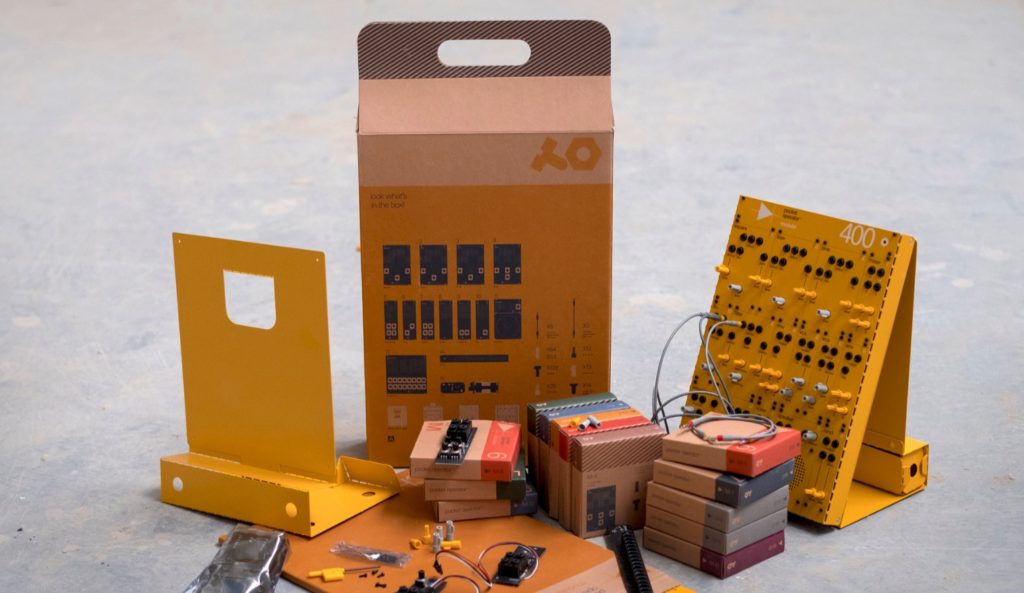


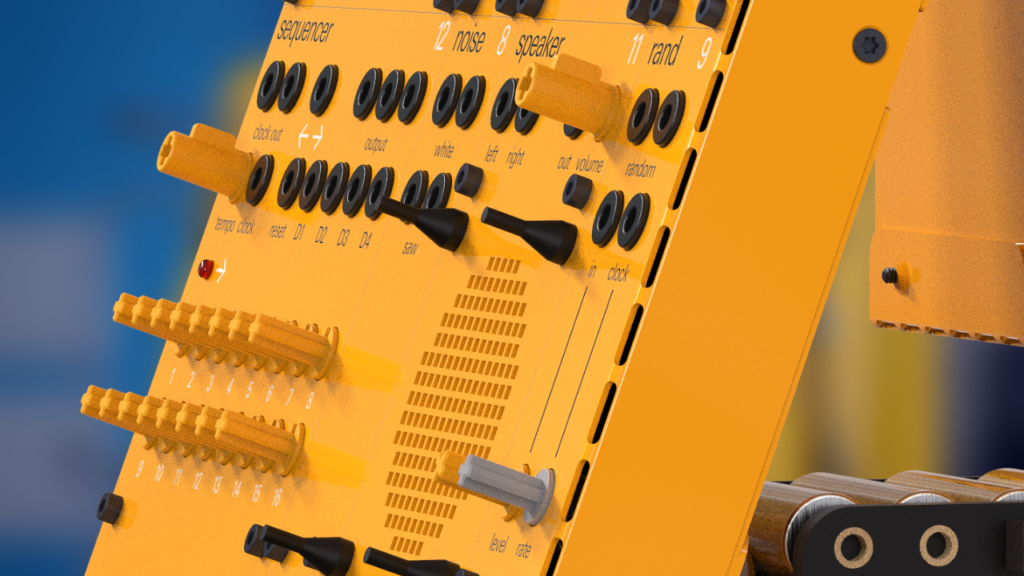
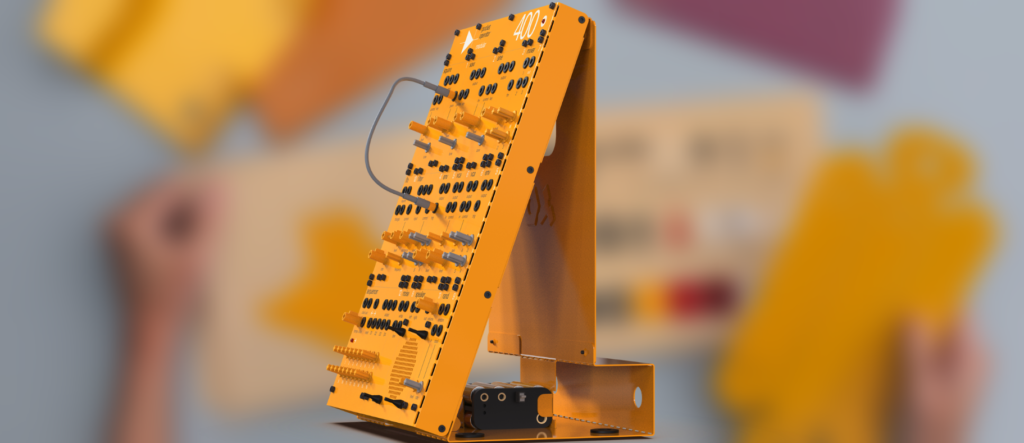
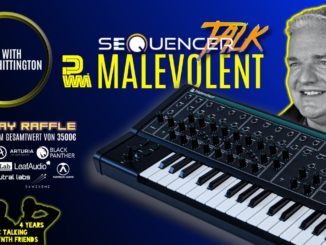
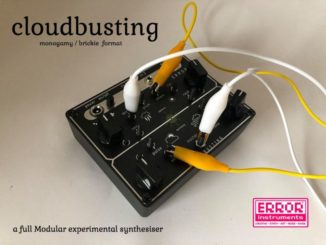
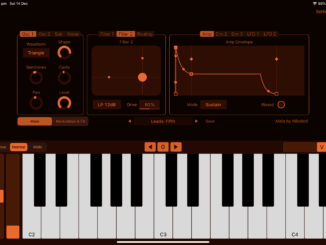
Be the first to comment